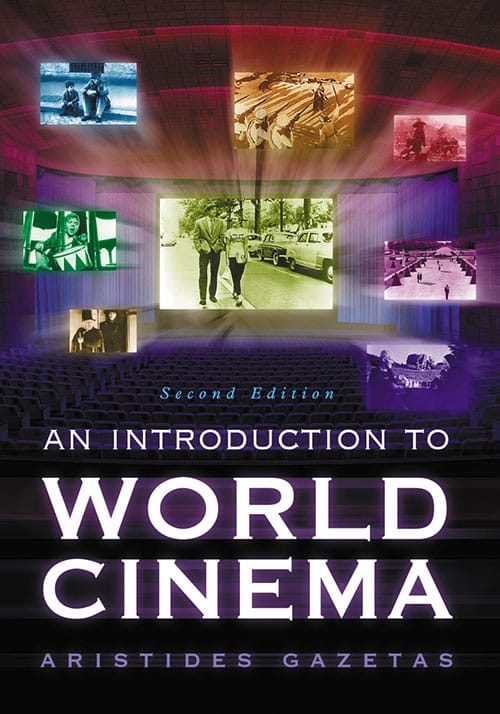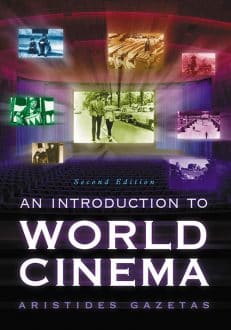An Introduction to World Cinema, 2d ed.
$39.95
In stock
About the Book
Motion pictures are more than just entertainment. In film studies courses in colleges and universities worldwide, students and professors explore the social, political, technological and historical implications of cinema.
This textbook provides two things: the history of film as an art form and an analysis of its impact on society and politics. Chapters are arranged chronologically, covering the major developments in film, like the advent of talkies or the French New Wave. Each era is examined in the context of several exemplary films commonly viewed in film studies courses. Thus students can watch Birth of a Nation and Intolerance while studying the innovations made by D.W. Griffith from 1910 to 1919. The scope is global, embracing the cinematic traditions of Asia, Latin America and Africa, as well as the ever important American and European output. Thoughtful articles from film scholars are included. The flexible structure of the text allows a variety of options for classroom use or personal study.
Instructors considering this book for use in a course may request an examination copy here.
About the Author(s)
Bibliographic Details
Aristides Gazetas
Format: softcover (7 x 10)
Pages: 378
Bibliographic Info: 153 photos, references, index
Copyright Date: 2008
pISBN: 978-0-7864-3907-2
eISBN: 978-0-7864-5124-1
Imprint: McFarland
Table of Contents
Preface 1
Introduction 5
1. The Invention of Motion Pictures: 1895–1910 11
2. Early Narratives and the Nickelodeons 21
3. D. W. Griffith and Cinematic Language: 1910–1919 31
4. UFA and the German Studio System: 1919–1925 41
CRITICAL ESSAY: “Caligari” by Siegfried Kracauer 51
5. The Impact of D. W. Griffith on Soviet Montage: 1919–1925 62
6. The French Avant-Garde Tradition and Surrealism 76
7. Hollywood Silent Films in the Jazz Age: 1919–1929 86
8. Hollywood and the Sound Films of the 1930s 100
9. French Cinema of the 1930s 109
CRITICAL ESSAY: “The Evolution of the Language of Cinema” by André Bazin 119
10. The Hollywood Golden Years: 1930–1945 128
11. Italian Neorealist Cinema: 1945–1954 141
CRITICAL ESSAY: “Some Ideas on the Cinema” by Cesare Zavattini 151
12. Hollywood at War and Postwar Paranoia: 1940–1954 159
13. Postwar Japanese Cinema: 1950–1990 169
14. Hollywood in Transition and Decline: 1955–1962 179
15. Symbolist Traditions in the Cinema: 1950s–1970s 190
16. The French New Wave, Part One: 1957–1968 202
17. The French New Wave, Part Two: 1959–1980 211
CRITICAL ESSAY: “L’Année dernière à Marienbad: The Narration of Narration” by Allen Thiher 219
18. Postwar British New Cinema: 1956–1972 228
19. The Italian Cinema of Fellini and Antonioni 237
20. Hollywood Revival and the Anti-Myth Era: 1964–1976 248
CRITICAL ESSAY: “Blow-Up, Swinging London, and the Film Generation” by Peter Lev 259
21. New Italian Cinema of Pasolini and Bertolucci 265
22. New German Cinema 275
23. American Auteurs: Allen, Altman and Coppola 282
24. Revisiting Genre Films in the 1980s and 1990s 294
25. Third Cinema and Post-Colonial Narratives in Africa, Latin America and Asia 306
CRITICAL ESSAY: “From a Hybrid Place” by Trinh T. Minh-Ha with Judith Mayne 315
26. Revisioning History: Contesting Colonialism 323
27. Contemporary Canadian Filmmakers: 1987–2007 335
28. Cultural Politics: Contemporary Inquiries into a “War on Terrorism” 344
Index 355
Book Reviews & Awards
• “Scholarly…excellent”—The Midwest Book Review
• “The finest book to supplement an introductory film course designed to help college students better understand the significance of the motion picture”—Rogue Cinema
• “Offers critical essays by film scholars…the best film text currently available…the quintessential study guide”—The Current





